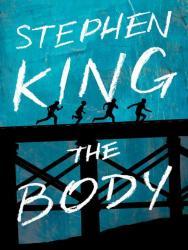
This is definitely my favorite book! It's basically a coming of age story about four 12-year-old boys. They go on an adventure to find a body as the title suggests. However, despite the dark name, and the fact that the author is Stephen King, this book is not horror by any means. Reading this book, you feel like you're going on an adventure with Chris, Gordie, Teddy, and Vern. I would also highly recommend the movie that was based upon the book, Stand By Me. All in all I would recommend that anyone should read this book, it's an amazing story!!
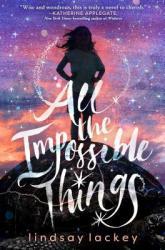
This was a 2020 All Pikes Peak Reads teen selection. This is a very good book. It's fast paced for the subject matter and the characters are engaging. I think the 'impossible' message in this book is inspiring, but may have been dealt out with a heavy hand. But that's okay. I liked the magical realism as well. Overall, I would recommend this book.
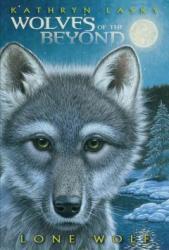
This series is one of my favorites. It's about a world where animals preside, and wolves are the main focus. The detail in this is amazing and the interactions are realistic. While there are elements of fantasy, it still feels like the real world. I got lost in this book the first time I read it because of how beautifully she wrote the characters, they just seemed to come alive. If you want a good read about intelligent wolves in a fantasy land, read Wolves of the Beyond. The first book is Lone Wolf.

Acclaimed Young Adult author Elana K. Arnold knows there is realism to be found in dark fairy tales and the award-winning author delivers once again, following up her Printz Award-winning Damsel with Red Hood (Feb. 2020), a retelling of the classic fairy tale geared toward older teens. The story centers on Bisou, a girl in a red hooded sweatshirt, who discovers she has inherited the instincts and supernatural strength -- triggered by menstruation during the full moon -- to stop the boys who turn into werewolves at that time from hurting the young women they prey upon. It's a violent and bloody tale enhanced by layered depictions of strong females, positive male allies and a realistic portrayal of teen life. Arnold effectively blends magical realism, dark fantasy elements and modern prose together into a disturbing but ultimately empowering story that celebrates sisterhood that spans generations while shining a light into the dark shadows of rape culture. The story quickly builds to an ending that does not disappoint.
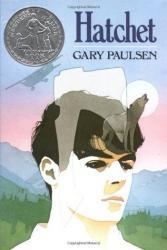
A 13-year-old boy, Brian Robeson, traveled in a small bush plane to visit his dad in Canada. Mid-flight the pilot has trouble breathing and Brian finds himself trying to fly the plane so they don't crash. The plane eventually runs out of fuel and makes a crash landing into a lake. While swimming out of the lake, Brian remembers the hatchet his mother gave him which becomes his one and only survival tool. When Brian realizes he is stranded in the woods, he has to find ways to survive in this new environment. Brian first finds a patch of berries for a source of food. He then sets out to build a shelter for safety and fire for warmth. After facing many challenges Brian and missing warm meals and his bed, Brian must continue to survive by adapting to his situation.
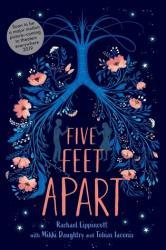
Five Feet Apart is a really good book that I recommend reading. The story is about two teenagers Stella Grant and Will Newman who both have cystic fibrosis. Both of their lives are very different from our teenage lives. They experience lots of ups and downs in life and the biggest one is them falling in love with each other and having to stay five feet apart. They took a major turn in their lives and risked the rule of being five feet apart because Stella had a dream to see the city lights. Lungs had arrived for Stella that's what she needed but she wasn't in her room. Doctors started to panic because she was nowhere to be found. Meanwhile, Stella and Will were out on the ice until Will finds himself trying to save Stella's life. Read Five Feet Apart to find what dramatic accident they come upon.
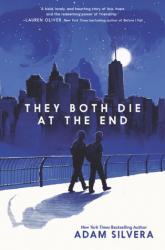
They Both Die In The End is about two boys who find out they have one day left to live, and end up finding each other to spend their last day together. The book is very sad, yet really makes you think about what would you do if you only had one day left to live. This book has so many twists and turns, but in the end everything comes together and makes sense, which I loved. The author did a great job of having pieces from everyone's lives play a part in other peoples, but people don't know this only the reader sees these connections. I would recommend this book to anyone who is looking for a sad book that is very well written, and doesn't really touch on any hard subjects.
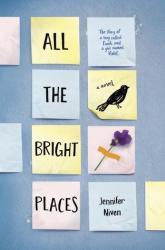
All The Bright Places shows two teens struggling with suicide and other mental illnesses, but when they find each other things start to look up. I loved how this book did not romanticize suicide and mental illness, but shows them in a very realistic, meaningful way. The book is absolutely heart breaking when out of no where there is a huge tragedy, so you may want some tissues on hand. This book is for a more mature reader who can handle the topic of suicide, and is wanting a sad book. Although the book throws you for a turn it leaves you with a sense of peace at the end.
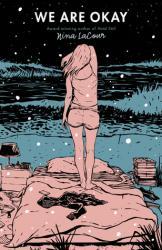
We are Okay is about a girl who goes through some tragic events in her life, and is now trying to deal with them. The book has quite a few twists and turns that can throw you off, but I really liked that. I did not like how short the book was though, and I felt the author could have added more in. The book ended off at a happy spot, but as a reader I wanted to know more about what happens after. Overall I would recommend this book to anyone who is looking for an easy read that you won't want to put down until it is over, which is fairly quick.
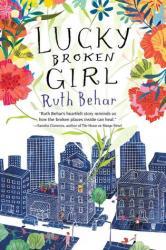
Lucky Broken Girl is about is girl named Ruthie, who recently moved from
Castro's Cuba. When her father decides to buy a car and surprise the family,
they get into a terrible accident, testing the car out. Ruthie breaks her
leg, and must live in a body cast to mend her leg and to make sure one leg is
taller than the other, since she is growing. Ruthie must spend months in the
body cast. Along the way, Ruthie makes friends and loses friends, learns how
to paint, and continues her life, as much as possible, as to not get behind.
This is also a true story. The author changed some parts of the story, but it
is based off of true events.
I really enjoyed this book. It reminded me that not everyone's life is
perfect, and everyone is going through something. Even though the setting of
the book was in Ruthie's room most of the story, I had a lot of trouble
putting the book down. There are some sad parts but there are also a lot of
happy parts. This book is definitely a ten out of ten.
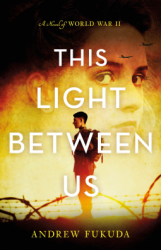
This Light Between Us by Andrew Fukuda is an extremely powerful and compelling historical fiction novel. I came upon this book completely by chance when I had nothing else to read, and decided to give it a chance and I am so glad I did! This Light Between Us, set before and during World War II, tells the story of two pen pals--a French-Jewish girl named Charlie and a Japanese-American boy named Alex. When they are ten years old, Alex's class gets assigned pen pals from France, and the teacher mistakes Charlie as a boy, therefore assigning her to be Alex's pen pal. Alex, who is a cartoonist and lives in his older brother Frank's shadow in their small town of Bainbridge Island, Washington, is shy and quiet and doesn't have a lot of friends. Popular, vivacious Charlie is instantly taken with the idea of writing to an American, and therefore wishes to continue their correspondence. For years, Alex and Charlie's letters fly across the Atlantic, including Alex's cartoons, and Charlie's tales of life in France. They discuss dreams, plans, ambitions, and how they finally will meet. The first part of this book is dedicated to the letters between Charlie and Alex, and as the situation in Europe worsens for Jewish people like Charlie, she finds solace in writing to Alex until the fateful day that Peal Harbor is bombed and all the Japanese Americans on Banbridge Island are directed to be sent to internment camps. Alex and his family are sent to the Manzanar Internment Camp in California right as Charlie's letters to Alex trickle to a stop. Determined to find the girl that Alex has come to love, Alex signs up to go to war.
I've read Farewell To Manzanar twice in school, and I found This Light Between Us tells the story of the Japanese internment camps in a much more accessible and heartbreaking way. This book is not a memoir, unlike Farewell To Manzanar, and even though the experiences described in both are the same, I connected to Alex's family's struggles in this book much more than I did in Farewell To Manzanar. The utter desperation of the entire family and the lack of hope described in this book is so heartbreaking that it is understandable why Alex signs up to go to war. I was also worried that the part of the book dedicated to Alex fighting in the war would be slow or even boring. Alex is constantly motivated by his desire to find Charlie. Every struggle in training, every battle he fights is for the purpose of finding her. The characters Alex experiences in his regiment are memorable and touching, and add to the narrative beautifully.
There is a quote from Jane Eyre that talks about a string being knotted in on person, right below their heart, and tied to another person, and however many miles away they may be, that string always will bring them back together. This concept is expressed and used many times in This Light Between Us, and truly represents the love that Alex and Charlie have for each other-- the idea of loving someone you've never met but who knows you better than anyone else is such a clever take on a historical fiction love story, and really sets This Light Between Us out from the crowd of WWII novels.
I loved this book. I read it in just a few days, and found it impossible to put down. I would recommend this book to anyone who likes historical fiction, romance, or just a good story! This Light Between Us is a powerful gem of a book that I highly recommend!

Things Fall Apart is about a Nigerian man, Okonkwo, who watches as his village is destroyed by European missionaries. Once a feared and respected man in his village of Umuofia, Okonkwo is reduced to eventually taking the orders of white men. Okonkwo is a hard and emotionless man who believes that anything that is not masculine is weak and therefore unworthy. When missionaries come to Umuofia, Okonkwo urges his fellow villagers to resist the attempts to diminish their culture and replace their government, but he's met with little support. Eventually, Okonkwo is banned, and when he returns, his village has completely changed.
I liked Things Fall Apart because it's a great book that challenged the idea of African savagery and portrays African culture, specifically Nigerian culture, as complex and intricate, and not the 'uncivilized' society many people view Africans as today. Okonkwo is an interesting character because his unwillingness to adapt to the new change represents an internal struggle many pre-colonized Africans faced in the wake of colonization. The ending is symbolic because it represents the ultimate death of culture as a result of European exploration.
Overall, the novel provides a beautiful insight into another culture often ignored in mainstream media.
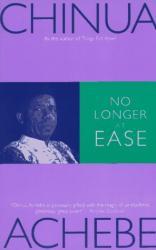
No Longer at Ease is the second installment in the African trilogy series. It is preceded by Things Fall Apart and follows the life of Obi, Okonkwo's grandson. Obi leaves his village in Nigeria to pursue an education in Britain where he meets Clara and falls in love with her. He returns to Nigeria and gets a job in civil service with the help of the board of elders. Obi is conflicted between his African culture and Western lifestyle, and heavy in debt, he takes a bribe.
Just like his grandfather, Obi is strong-minded and stubborn. He intends on marrying Clara although she is an osu, and begins taking bribes when he cannot pay his debts. He questions Nigerian traditions, and often compares Africa to Britain, ultimately positioning him in a place where he finds it nearly impossible to balance both cultures. However stubborn and sometimes reckless Obi is, he's a symbol of generational growth: unlike his grandfather and father, Obi ultimately understood that one culture was not better than the other, and change was imminent. Okonkwo, Nwoye, and Obi symbolize the different industrial stages of Nigeria and the social turmoil that followed, and they show the theme of western versus eastern culture clashes.
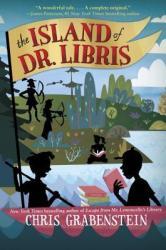
I love this book because of the creativity. The way it blends creative concepts and reality is amazing, in that it feels like something that actually could happen. The detail is pretty good and the characters feel realistic. Overall, this book is a great read, blending creative concepts, excellent detail, and realism into the same book.
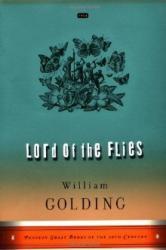
I liked Lord of the Flies for its realism and its detail. The concept of boys stranded on an island was interesting to read, while the realism of the boys’ reactions kept it alive. The detail was fabulous, the interactions well thought out, and the diversity was well done. I loved this book, not just for reading for my writing class, but outside of school as well.
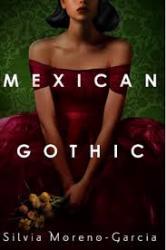
“Mexican Gothic” follows Noemí Taboada’s mission to uncover the dark secrets of the High Place. Her journey begins when she receives a mysterious letter from her cousin with talk of poison and ghosts. Upon arriving, the Doyle household proves to be untrustworthy with the exception of the family’s youngest son. The Doyle family hid prying eyes behind the walls of the High Palace but Noemí’s sleuthing unlocks a wave of violence and madness.
I enjoyed this book and was hooked from the beginning. I recommend this book for people who enjoy reading about mysteries and paranormal activity. There is a hint of romance but the plot does not revolve around that.
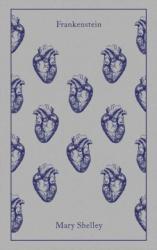
Frankenstein, or, the Modern Prometheus is a great gothic read. Like any other gothic novel, it is dark and mysterious, with elements of horror in it. While it had a rocky start for me, I soon got lost in the characters, with their wants and needs. The detail was amazing, while the wording was, em, very 17th century, but that makes the book no worse. All around, this is a riveting book that will capture your attention immediately.
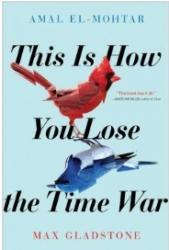
This time-travelling story of love and genocide centers on two rival agents battling to secure the best possible future for their warring factions. It opens with a blood-covered Red, the last woman standing on a battlefield heaped with corpses. She finds a letter that starts with “Burn Before Reading” from Blue, her rival whom she has spent lifetimes trying to thwart. So it starts with a taunt followed by a challenge scratched in a lava flow and a message woven into the DNA of a tree cut down by marauding armies. These spies never meet but these compromising letters – certain death if discovered by their superiors – build upon a mutual understanding that evolves into love. Who better to understand someone weary and confused by merciless, contradictory orders than their rival? Or is this an attempt to turn the other into a double agent? Or lay a deadly trap? This novella deftly avoids the confusion that spoils average time-travel yarns by making each of the chapters into a vignette, told from either Red or Blue’s perspective, until a satisfying, meaningful conclusion.
Awards: 2020 Nebula Award for Best Novella, 2020 Hugo Award for Best Novella
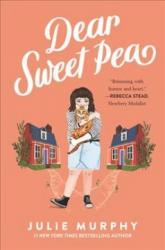
Dear Sweet Pea is about a girl named Sweet Pea who is a girl living two lives. Since Sweet Pea's parents are divorced, she has two houses on the same street. In between those two houses lives the towns advice columnist. When her sister gets sick and she has to go out of town, she asks Sweet Pea to mail the letters to her and take care of her plants. Sweet Pea agrees, but while caring for the letters, she runs into friend, parent, and advice trouble.
I loved this book. Some things Sweet Pea said and felt are relatable to anyone. This is a really easy read and I couldn't put the book down. I would recommend this book to anyone looking for a fast and relatable book.
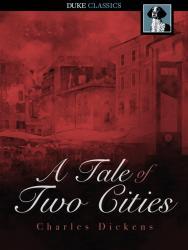
A Tale of Two Cities by Charles Dickens is one of the most popular books of all time, with over 200 million copies sold to date. The novel is set in London and Paris before and during the French Revolution and depicts the plight of the French peasantry demoralized by the French aristocracy, and many unflattering social parallels with life in London during the same period. The main characters are Charles Darnay, a French aristocrat who falls victim to the indiscriminate wrath of the revolution despite his virtuous nature, and Sydney Carton, a British barrister who endeavors to redeem his ill-spent life out of his unrequited love for Darnay's wife, Lucie Manette.
A Tale of Two Cities
One of Charles Dickens's most famous novels, A Tale of Two Cities is also one of his shorter (and better) ones. It begins with an unflattering portrait of an England overrun by highwaymen and courts which are almost as rapacious, and soon shows us a France where things are even worse. Nowhere does Dickens demonstrate his marvelous ability to capture moods and sentiments better than in his depiction of a seething, oppressed populace on the verge of boiling into violence.
And now that the cloud settled on Saint Antoine, which a momentary gleam had driven from his sacred countenance, the darkness of it was heavy—cold, dirt, sickness, ignorance, and want, were the lords in waiting on the saintly presence—nobles of great power all of them; but, most especially the last. Samples of a people that had undergone a terrible grinding and regrinding in the mill, and certainly not in the fabulous mill which ground old people young, shivered at every corner, passed in and out at every doorway, looked from every window, fluttered in every vestige of a garment that the wind shook. The mill which had worked them down, was the mill that grinds young people old; the children had ancient faces and grave voices; and upon them, and upon the grown faces, and ploughed into every furrow of age and coming up afresh, was the sigh, Hunger. It was prevalent everywhere. Hunger was pushed out of the tall houses, in the wretched clothing that hung upon poles and lines; Hunger was patched into them with straw and rag and wood and paper; Hunger was repeated in every fragment of the small modicum of firewood that the man sawed off; Hunger stared down from the smokeless chimneys, and started up from the filthy street that had no offal, among its refuse, of anything to eat. Hunger was the inscription on the baker's shelves, written in every small loaf of his scanty stock of bad bread; at the sausage-shop, in every dead-dog preparation that was offered for sale. Hunger rattled its dry bones among the roasting chestnuts in the turned cylinder; Hunger was shred into atomics in every farthing porringer of husky chips of potato, fried with some reluctant drops of oil.
After spending eighteen years in the Bastille, a French country physician is released and allowed to emigrate to England, where he is reunited with the daughter he has never met. Lucie Manette, typical of Dickens women, is a pure-hearted angel who is instantly devoted to him despite never having known him. Through various plot twists, Lucie marries Charles Darnay, who turns out to be the expatriate nephew of the Marquis who had Doctor Manette imprisoned, in a backstory eventually revealed to us with an even more improbable plot twist.
Once the Revolution begins, Charles Darnay is lured back to Paris to save the life of one of his former servants. Naturally, he is promptly imprisoned and put on trial. His family, including Lucie and their daughter, as well as pretty much the entire cast of the novel thus far, follows him, and are all put in peril of meeting Lady Guillotine. It was the popular theme for jests; it was the best cure for headache, it infallibly prevented the hair from turning grey, it imparted a peculiar delicacy to the complexion, it was the National Razor which shaved close: who kissed La Guillotine, looked through the little window and sneezed into the sack. It was the sign of the regeneration of the human race. It superseded the Cross. Models of it were worn on breasts from which the Cross was discarded, and it was bowed down to and believed in where the Cross was denied.
Dickens's stories are full of improbable plot twists. Characters who met once will always meet again. The coincidences in A Tale of Two Cities almost defy the reader's suspension of disbelief -- but it's Dickens, and Dickens can be forgiven a lot. He shows the pitiless brutality of the French aristocracy and the suffering of the people until your sympathies are entirely with them, and when the tumbrils begin rolling through the streets you can't but think that the aristos had it coming and then some. But then the Terror is unleashed -- and personified in the form of Madame Defarge -- and the oppressed turn just as brutal and pitiless. This is the only way Dickens could have brought our sympathies back to the main characters, who after all, have lived pretty safe and privileged existences even if they weren't the evil "Monseigneur" who ran children beneath the wheels of his carriage. And let's face it, Charles Darnay really picks up the Idiot Ball when he goes back to Paris.
I doubt there are many people who don't know how the novel ends, but while it's a story of redemption and self-sacrifice, I was not nearly as touched by Sydney Carton's heroism as I was by the Madame Defarge vs. Miss Pross
smackdown, which I think is one of Dickens's best climaxes ever, and which none of the film adaptations (below) did justice:
"You might, from your appearance, be the wife of Lucifer," said Miss Pross, in her breathing. "Nevertheless, you shall not get the better of me. I am an Englishwoman."
Madame Defarge looked at her scornfully, but still with something of Miss Pross's own perception that they two were at bay. She saw a tight, hard, wiry woman before her, as Mr. Lorry had seen in the same figure a woman with a strong hand, in the years gone by. She knew full well that Miss Pross was the family's devoted friend; Miss Pross knew full well that Madame Defarge was the family's malevolent enemy.
"On my way yonder," said Madame Defarge, with a slight movement of her hand towards the fatal spot, "where they reserve my chair and my knitting for me, I am come to make my compliments to her in passing. I wish to see her."
"I know that your intentions are evil," said Miss Pross, "and you may depend upon it, I'll hold my own against them."
Each spoke in her own language; neither understood the other's words; both were very watchful, and intent to deduce from look and manner, what the unintelligible words meant.



 Ruth Holley Library will be temporarily closed for approximately one week starting Mon., Dec. 2 to complete roof repairs.
Ruth Holley Library will be temporarily closed for approximately one week starting Mon., Dec. 2 to complete roof repairs.